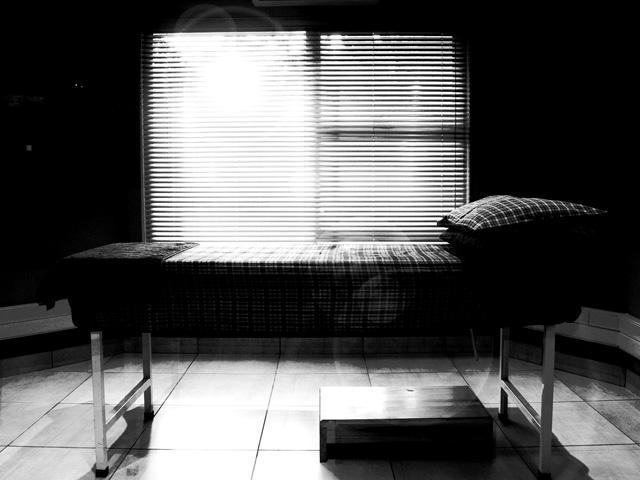
Rustenburg, 0299
Tel: +27 (0)14 592 8322
Netcare Ferncrest/Life
Peglerae/Medicare
Tel: +27 (0)14 592 8322
Cervical Surgery
(Decompression, Fusion, Prosthesis)
GENERAL INFORMATION AND ADVICE:
Number 1
If you were given a cervical brace you should wear it as prescribed by your doctor.
Number 2
Avoid lifting or carrying anything heavy. Avoid reaching for things overhead. Lifting and carrying put extra stress on your healing tissue and muscles and should therefore be avoided for at least 6 weeks.
Number 3
Only start driving when you can safely drive without any pain and your neck is moveable enough to perform all the nessasary actions. You may be a passenger in a car for short periods at a time.
Number 4
Keep the wound dry while the wound is dressed. Plasters can usually be removed after 14 days or as the doctor ordered. If your wounds are red,warm or have a yellow discharge contact the doctors rooms.
Number 5: Showering / Bathing
- For the first two days after discharge from the hospital preferably a sponge or washcloth type bath.
- After the third day you can take a shower if you securely tape something over the dressing so that it does not get wet. Be prepared to change the dressing immediately if it does get wet or becomes loose.
- It is important when you take a shower to have somebody around to assist you.
- If you don’t have a shower at home having a bath is allowed but you are not allowed to push hard on your arms when getting in and out of the bath – use assistance.
Number 6
- To reduce pain, muscle spasm, swelling and inflammation.
- To retain normal movement in the neck, shoulders and back.
- To retain good mobility of nerve tissue.
- To improve body posture.
- To ensure proper healing of the surgical scar.
- To regain proper strength of neck and shoulder muscles.
- To give advice on do’s and dont’s
Number 7
It is important to stand and walk in increasing amounts every day. Please make a determined effort to walk at least three times a day increasing your distance and speed daily. This improves fitness and blood circulation to prevent blood clotting. (If a burning pain is felt in the leg please report to the doctors rooms)
Number 8
Remember to roll onto your side when getting out of or into bed.
(See exercises for examples on how to get in and out of your bed)
Number 9
If you have received orthopedic stockings use them as prescribed. They are used to control swelling and to prevent blood clotting.
Number 10
Maintain good posture (See exercises for examples of good posture).
It is very important to always maintain a good posture after neck surgery! Bad postures lead to bad surgical results as it puts too much stress on the operated tissue and compromises healing.
Number 11
For swelling and pain ice and heat can be used (See exercises for time specific management).
Number 12
The exact date for returning to work and driving will be discussed with you doctor.
Number 13
Do not do any gym exercises before 12 weeks post surgery. Consult your physio for a biokineticist referral if you want to start doing gym exercises.
Number 14
Do not lift any heavy objects or play sport before a biokineticist is satisfied that you have reached the final stages of your gym-rehab.
EXERCISES:
0-2 Weeks
EXERCISES SHOULD NEVER BE EXCESSIVLY PAINFULL
REPEAT ALL EXERCISES APPROXAMITALY 10 TIMES
1 - Breathing Exercises
a. Sit or lie down comfortably.
b. Breath in through your nose.
c. Breath out through your mouth.
d. Keep your shoulders relaxed.
1. Take a deep breath in and out.
2. Take a deep breath in, hold for 3-5 sec and breath out.
3. Take a deep breath in, then a bit more in, and breathe out.
2 - Posture Correction:
a. Sit on a hard chair.
b. Keep your back straight.
c. Pull in your stomach.
d. Tuck your chin backwards (ie make a dubble chin).
e. Pull your shoulder blades slightly down and backwards.
f. Now hold this position for 10 seconds.
3 - Circulation exercises to prevent blood clotting:
a. Footpumps
1. Keep your knee still,
2. Move your foot up and down.
b. Heelslides
1. Keeping your heel on the bed.
2. Move your heel to your buttocks as far as possible.
3. Straighten your knee again.
c. Pick your arm up above your head.
d. Pick your arm up sideways.
e. Straighten and bend the elbow.
f. Move your wrist in circles.
g. Exercise your fingers.
4 - Shoulder protraction/retraction:
a. Lie down on your back.
b. Lift your shoulders off the bed (forward).
c. Relax your shoulders and push your shoulder blades flat against the bed
(backwards).
d. When you are comforatable with this exercise you can also do it while
sitting.
5 - Elevation/ depression:
a. Lie down on your back.
b. Lift your shoulders up towards your ears.
c. Relax your shoulders and push then down towards your feet.
d. When you are comfortable with this exercise you can also do it while
sitting.
6 - Scapula retraction: (Pulling back shoulder blades)
a. Keep your arms at your sides.
b. Push your shoulder blades back into the bed and down to the buttocks.
c. Hold this position for 10 seconds.
Static Exercises:
a. Quadriceps
1. Sit with your knee straight.
2. Push your knee as flat into the bed as possible.
3. Hold 5-10 seconds.
b. Gluteus
1. Lie down on your back with your knee straight.
2. Squeeze your buttocks together.
3. Hold 5-10 seconds.
c. Calves
1. Sit down with your knee straight.
2. Point your toes.
3. Hold 5-10 seconds.
7 - Ice for swelling and pain:
a. Cover the surgery with a clean sheet of plastic or a towel in order the protect the wounds and
dressings.
b. Put an ice pack over your swollen or painfull areas.
c. Keep it on for 10-15 minutes.
d. You can do this 3 times per day.
8 - In and out of bed:
a. Into bed
1. Sit on the bed.
2. Slowly lie down on your elbow.
3. Pick your legs up onto the bed.
4. Roll onto your back.
b. Out of bed
1. Turn onto your side.
2. Lower your legs off the bed.
3. Slowly push up on your arms.
4. Push up until you are sitting.
5. Slowly stand up.
(Download the complete hospital exercise guidelines document)
Important!
All neck surgery patients require physiotherapy after dicharge from the hospital, to prevent post-operative
complications and failure of surgery.
- You will need 2-3 sessions/ week. Please phone the practice for an appointment ASAP.

